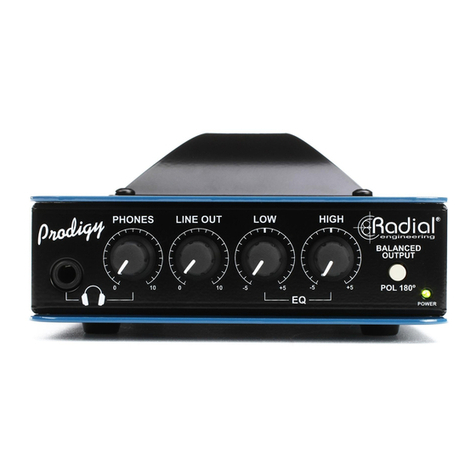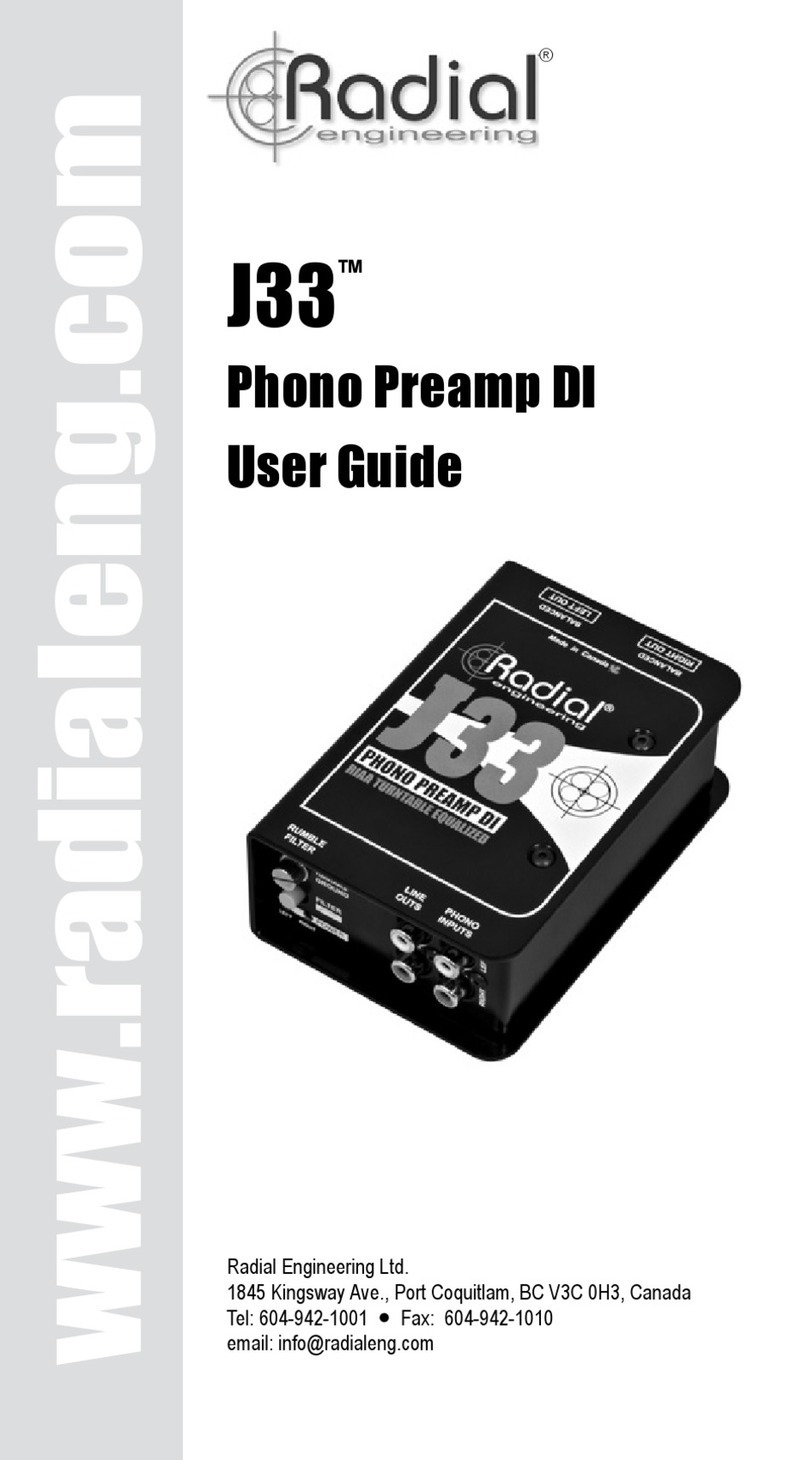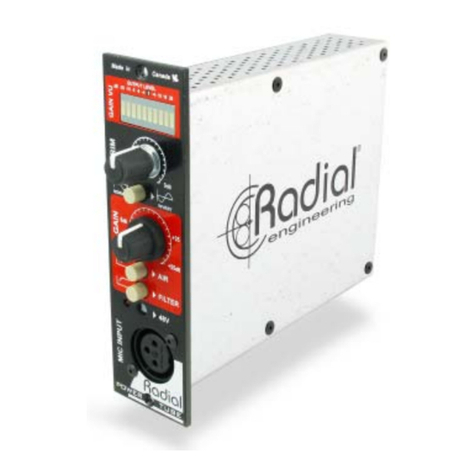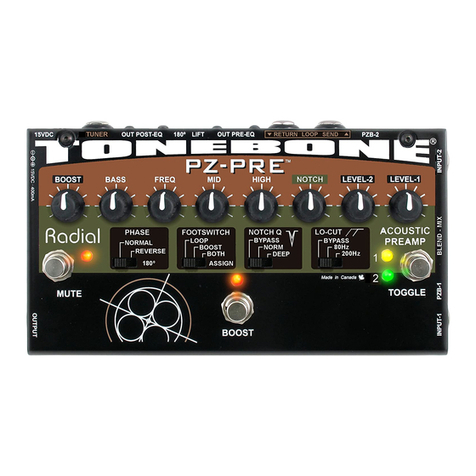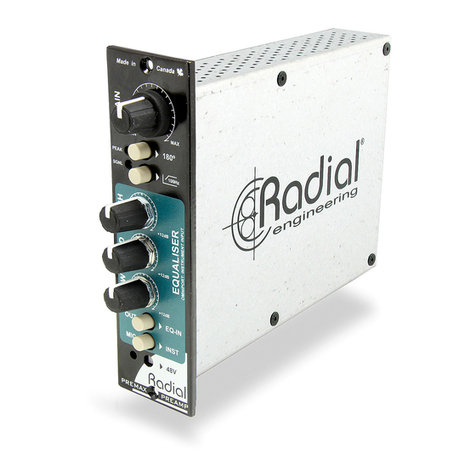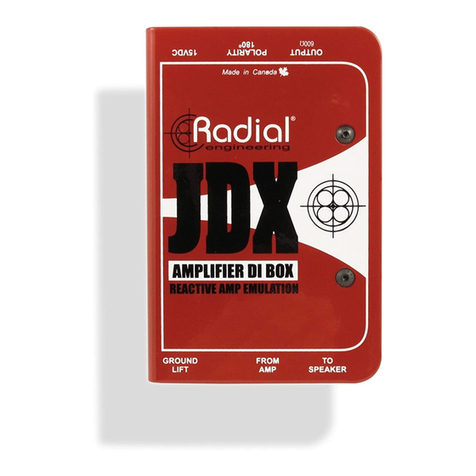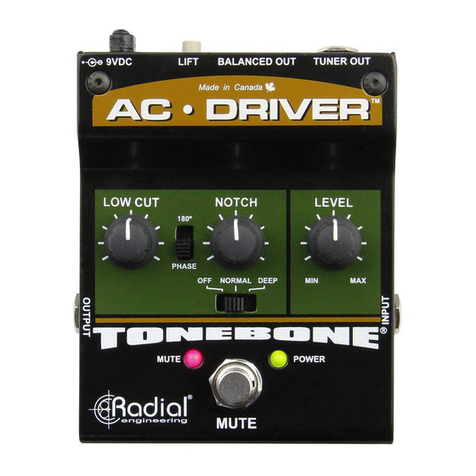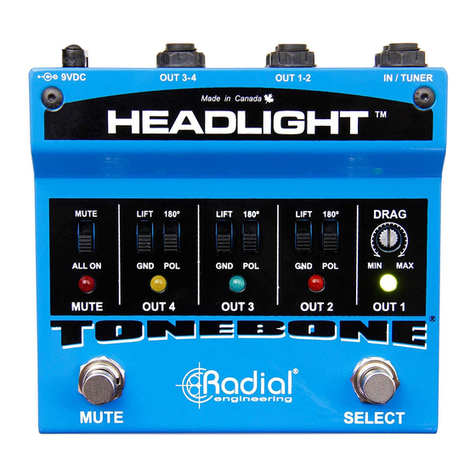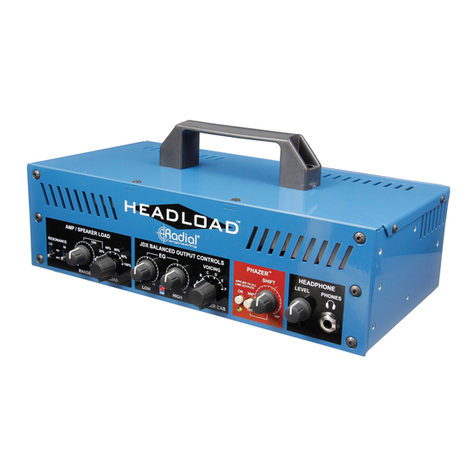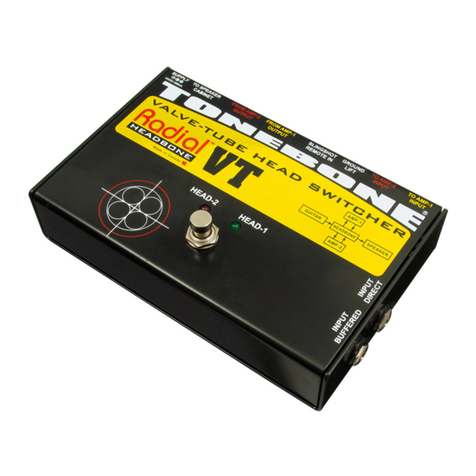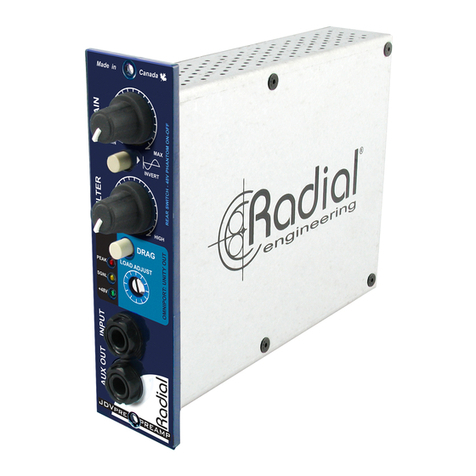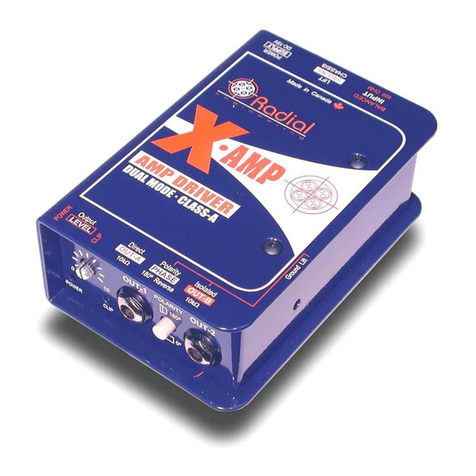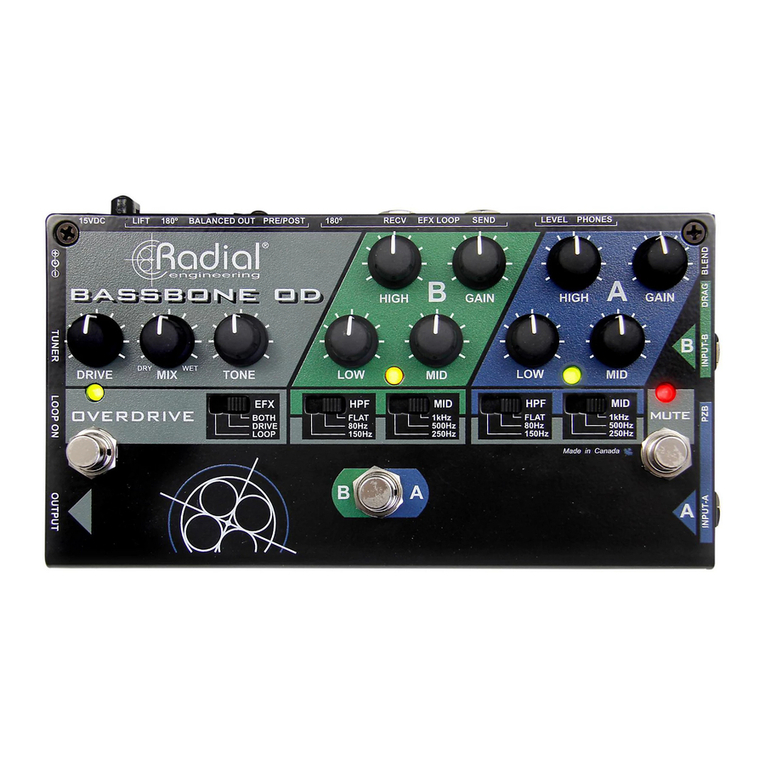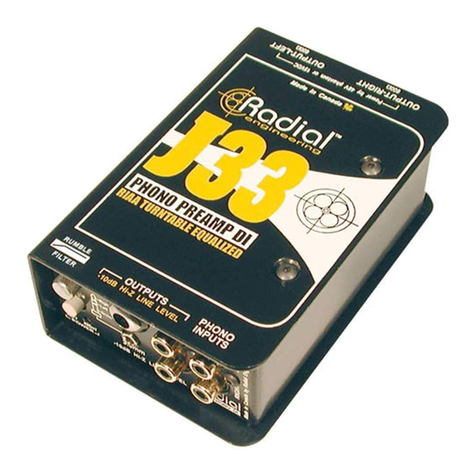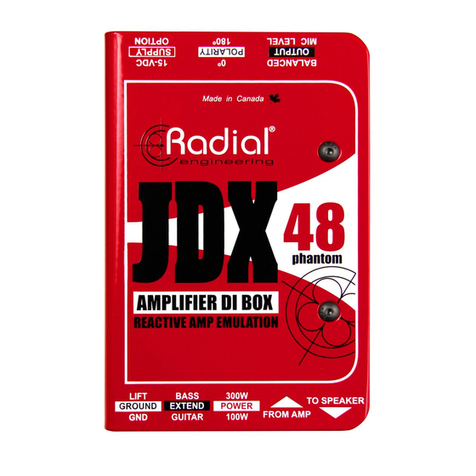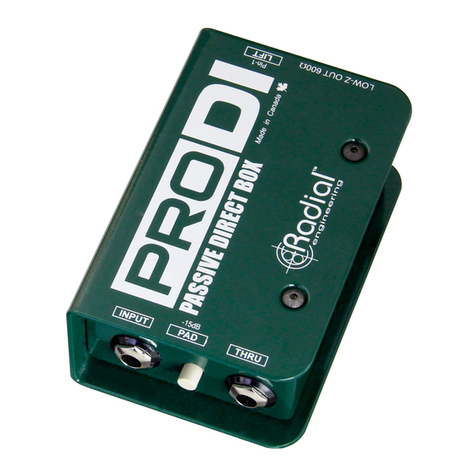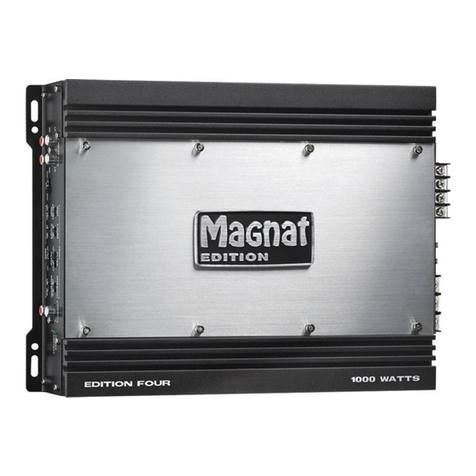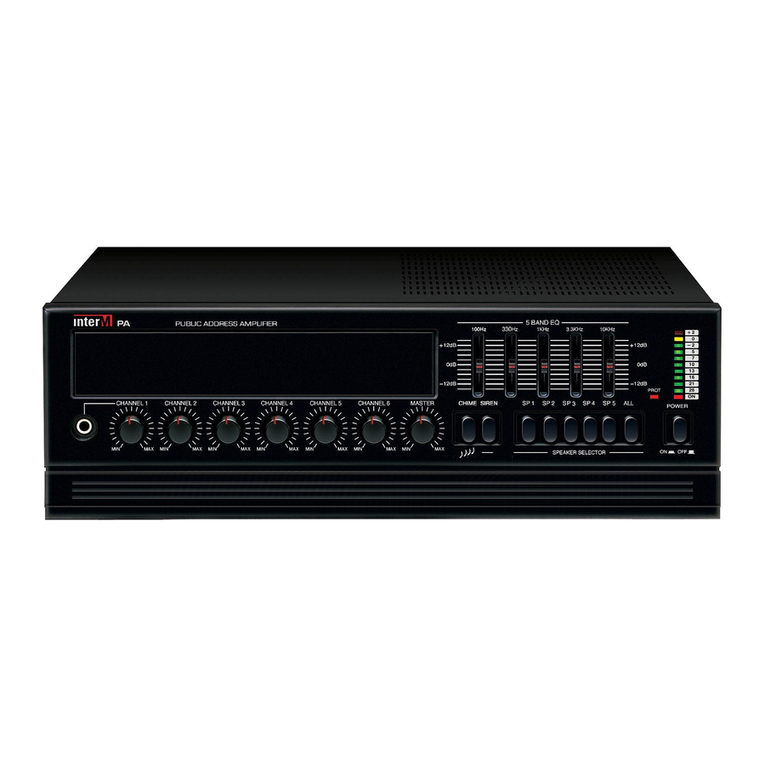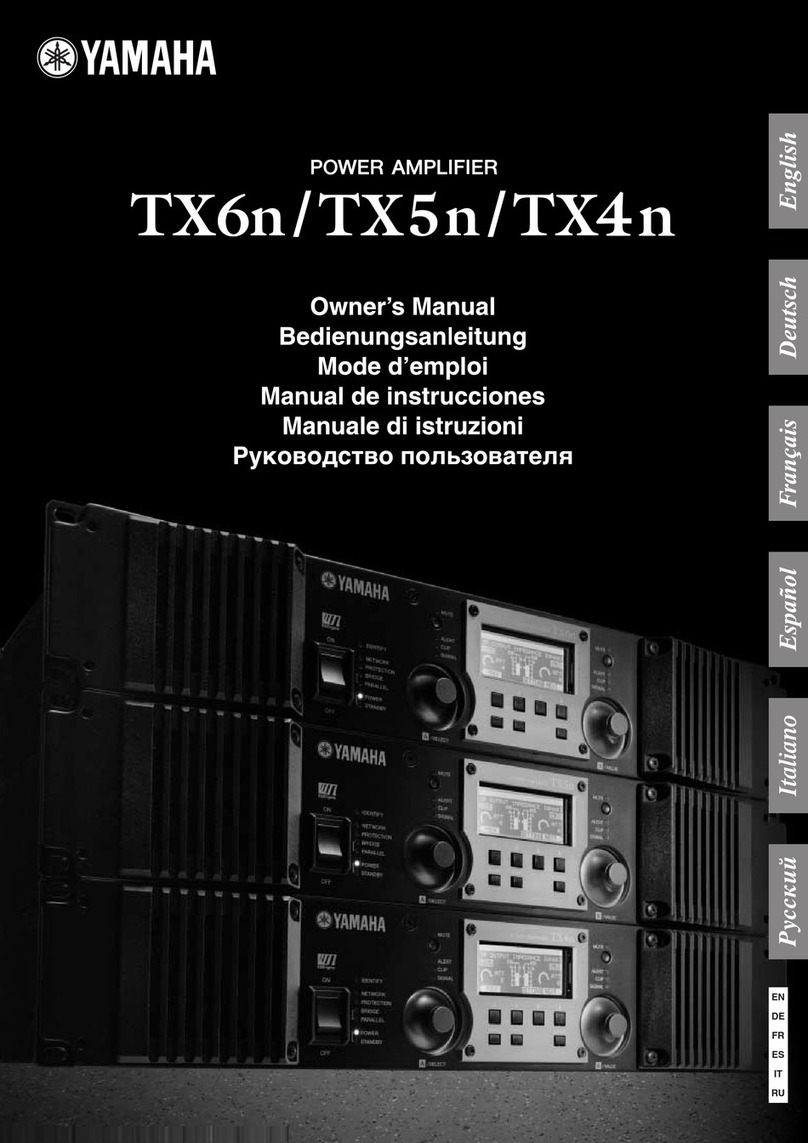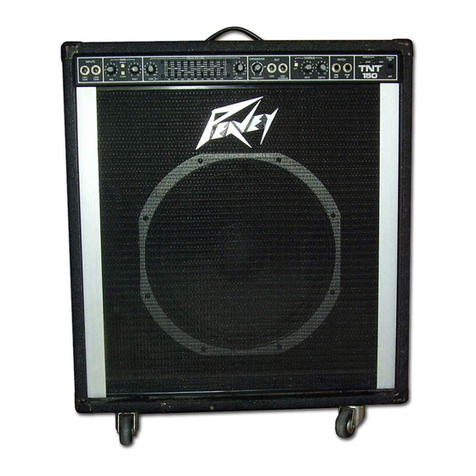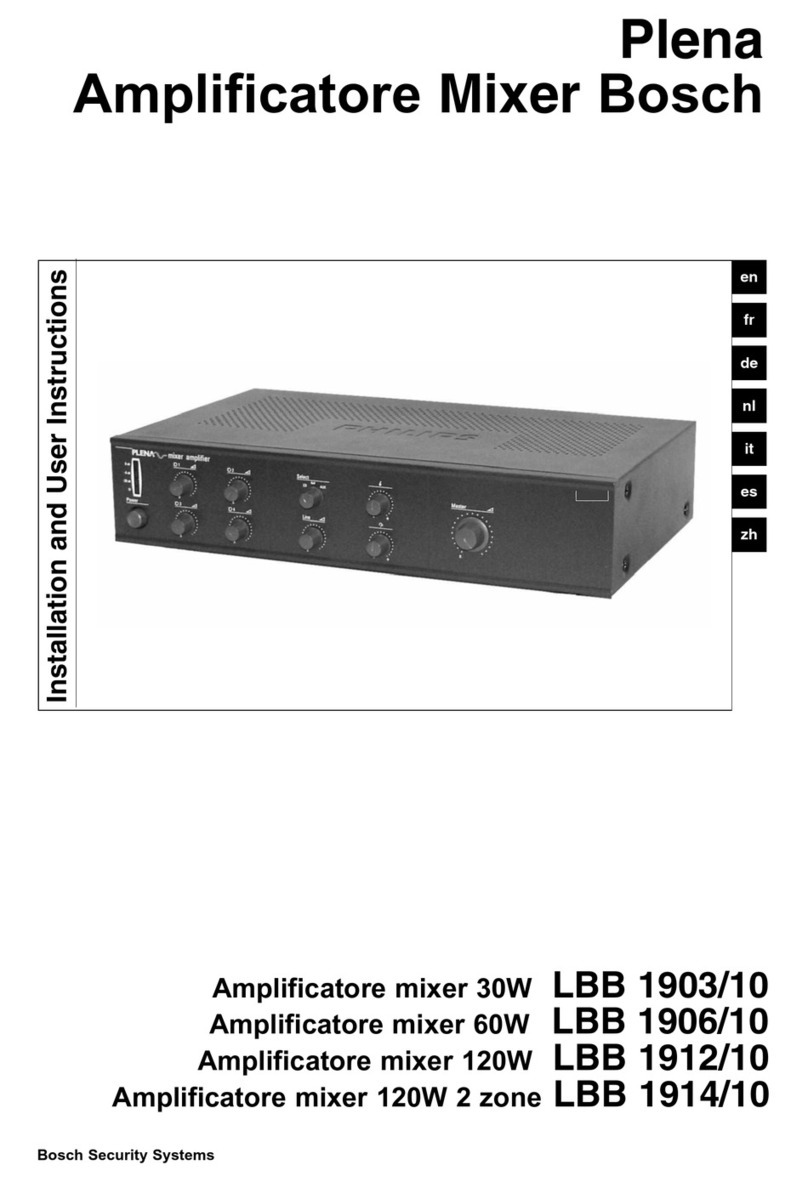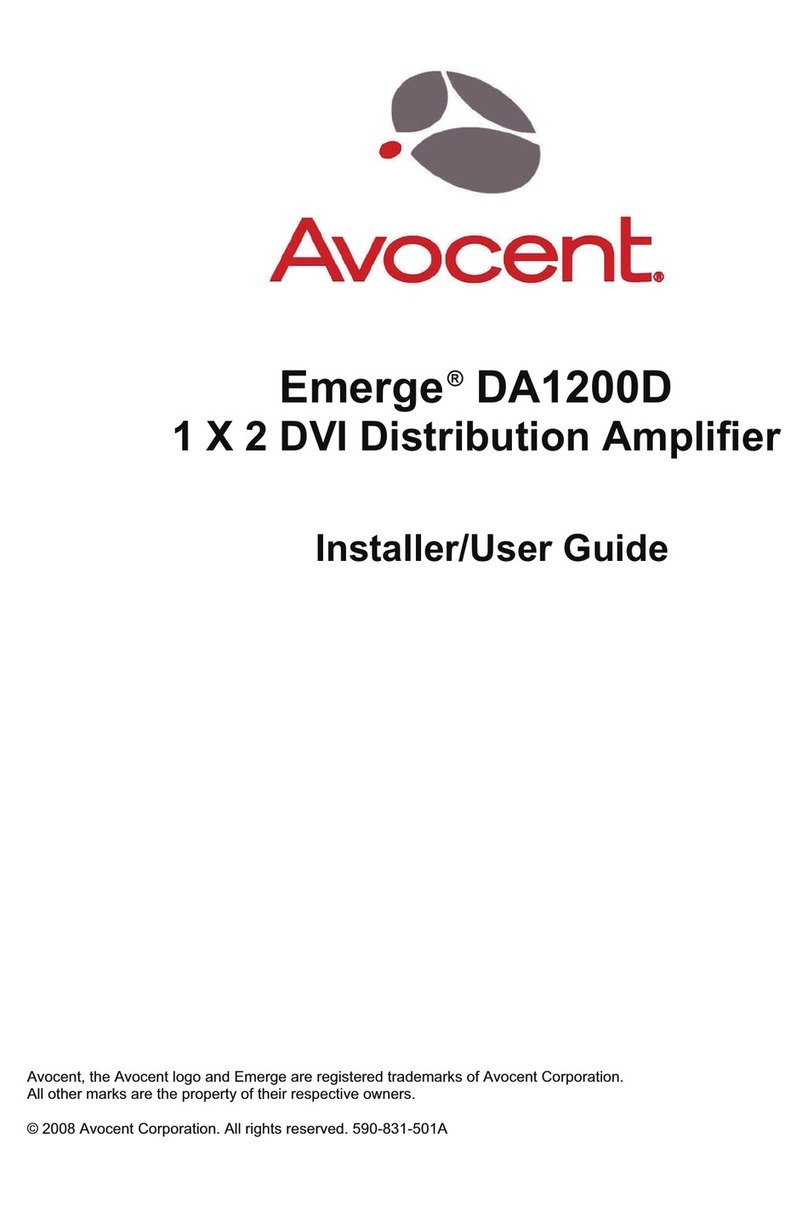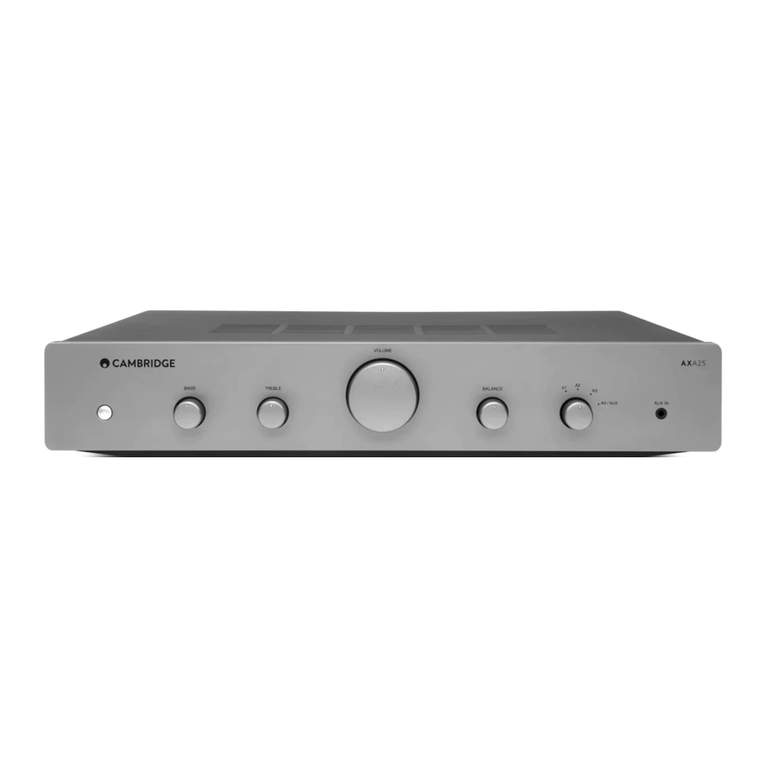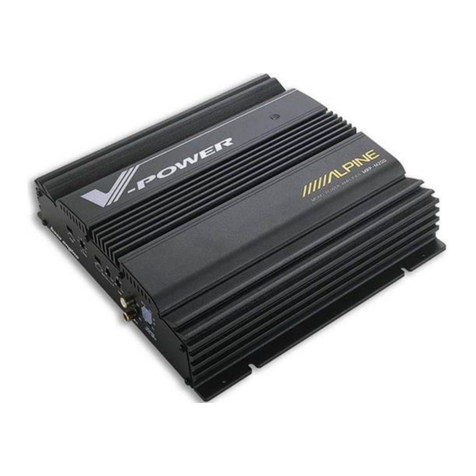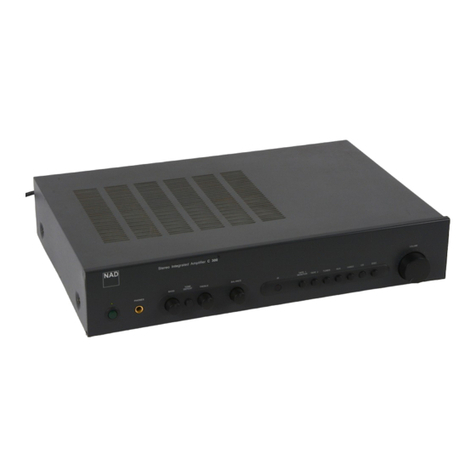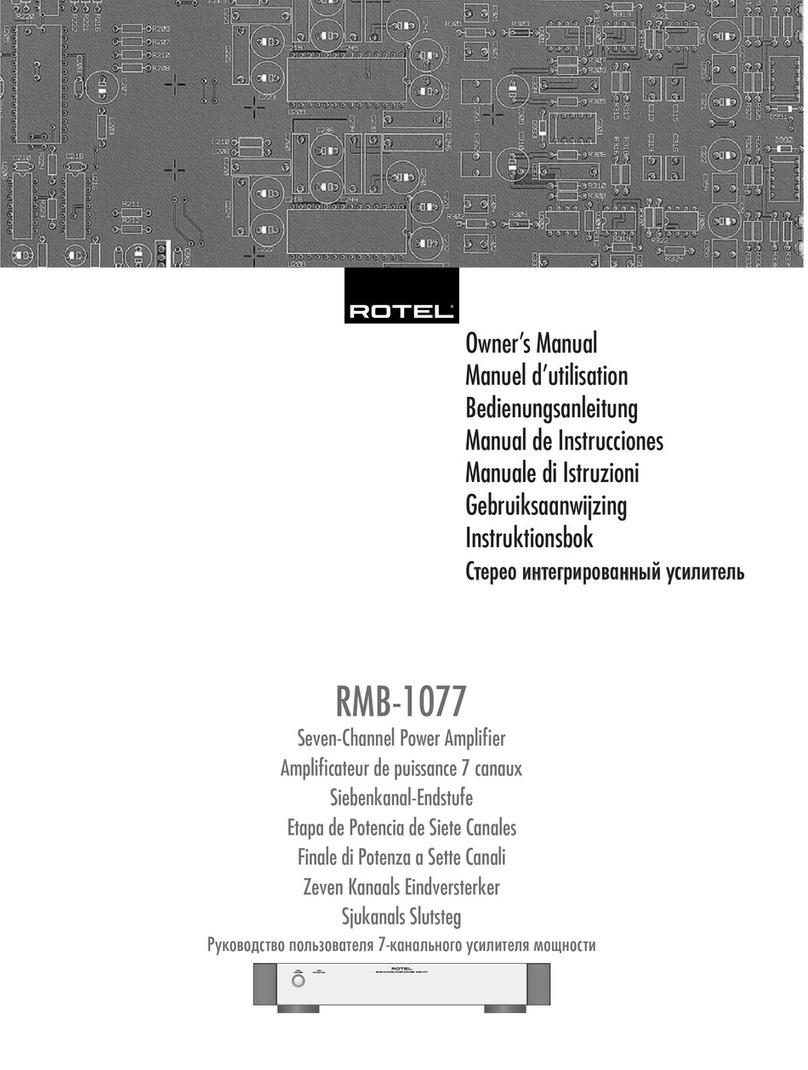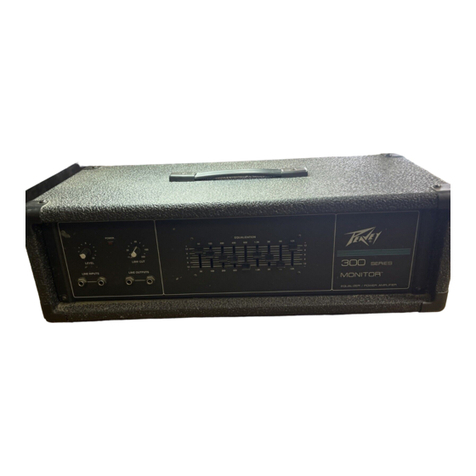PreComp™ Preamp and VCA Compressor
TruetotheMusic ®
Radial Engineering Ltd.
4
GETTING STARTED WITH THE PREAMP
Once you have the PreComp safely mounted
in your rack and patched into your recording
system, set the controls on the front panel
as shown here on the right. This ‘starting
position’ removes the compressor from the
signal chain to enable you to first set the
preamp to optimize signal-to-noise.
Power on the audio system and turn up the
volume on your monitors. Plug in your mic
and slowly turn up the preamp gain control
while observing the LED meter. The top red
LED illuminates when the signal is clipping. If
it flashes on signal peaks, turn the gain down
by about 10% to ensure a strong signal level
is maintained without clipping. Always test
at a low volume to ensure the PreComp is
patched in and working correctly. If you do
not hear any sound, check that your 500
series rack is patched correctly. If you are
using a condenser microphone, ensure the
48Vphantompoweris turned on by checking
the red LED at the bottom of the front panel.
Using The 180° Polarity Reverse
When recording an instrument, you may want to use two microphones and two PreComps at
the same time to capture the sound. Together, the mics can create a timbre that a single mic
cannot. One may be positioned near the instrument while the second may be set further away
to capture the room’s natural ambiance. Engaging the 180º polarity reverse on one PreComp
can sometimes achieve a fuller sound by aligning the low frequency phase response of the
two mics. (Devices like the Radial Phazer take this to another level by allowing you to adjust
the phase incrementally.)
The 180º polarity reverse can also be used to correct the phase of older vintage equipment
that may have been made before the AES standard was established. Most equipment today
employs the standard with pin-1 ground, pin-2 hot (+), and pin-3 cold (-). Depressing the
180º polarity reverse switch will toggle pins 2 and 3 at the XLR input to compensate for non-
standard or vintage equipment.
Using The High-Pass Filter
The PreComp’s microphone preamp section is
equipped with a high-pass filter that gently rolls off
bass frequencies below 100Hz. This is particularly
useful for acoustic instruments that can produce
excessive low frequency resonance like acoustic
guitar. With the high-pass filter engaged you can
reduce low frequency rumble without affecting
the overall sound of the instrument. This helps
eliminate excess bass in the mix and will increase
the dynamic range of your recording. High-pass filter response
-20
-15
-10
-5
+0
+5
+10
20 20k50 100 200 500 1k 2k 5k 10k
Hz
180º
ABOVE
BELOW
THRSH
-20
-10
+10
0dB
RATIO
1:1
2:1
10:1
5:1
GAIN
-20
0
+20
GAIN
MIN MAX
100Hz
FASTSLOW
IN
Minimum
Off (out)
Off (out)
1:1
0dB
Slow (out)
Bypass (out)
0dB
STARTING POSITION
